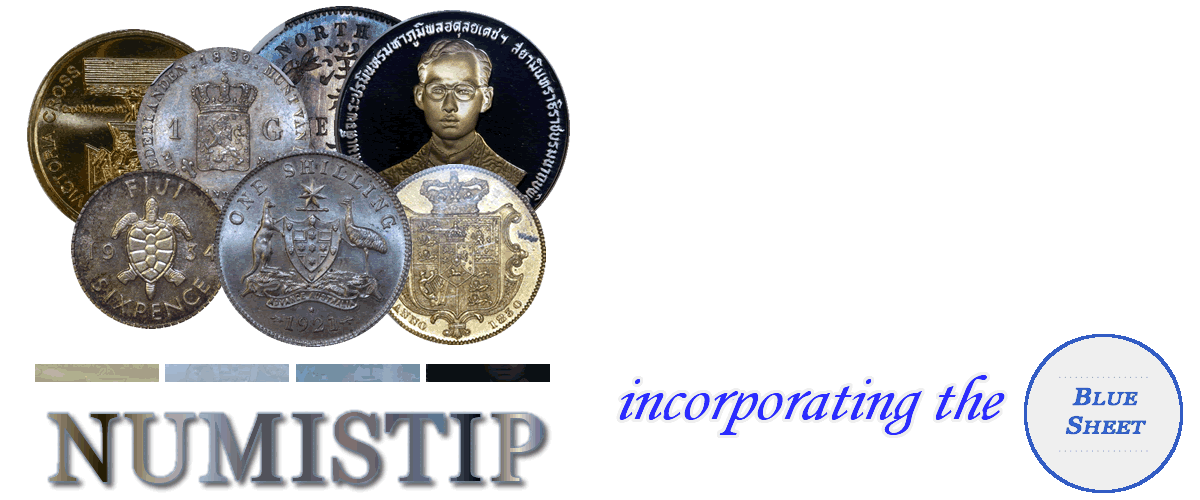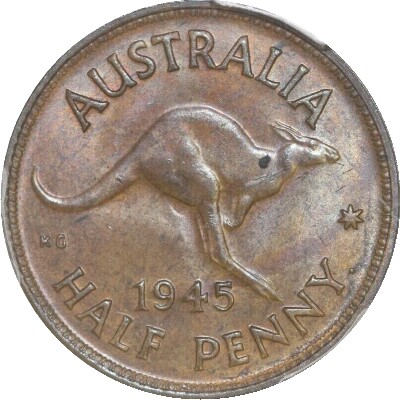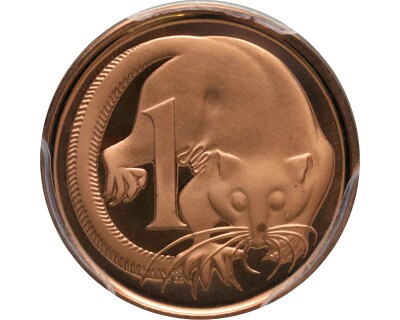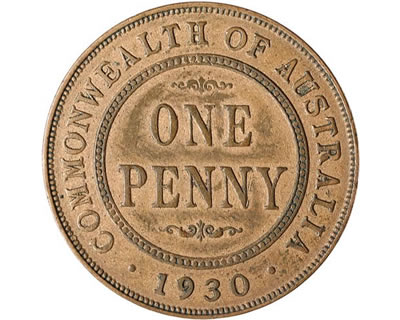



? The George V shilling series, lasting throughout George V's reign from 1911 to 1936, features the Australian coat of arms with ADVANCE AUSTRALIA across the scroll, SHILLING up the top, and the year of issue down the bottom. The obverse features the crowned bust of King George V facing to the left and the legend, GEORGIVS V D.G. BRITT : OMN : REX F. D. IND : IMP . Like most George V series, this a very popular series to collect. In lower grade, all dates can be acquired at reasonable ...

? The half penny switched over to the Kruger Gray, or Kangaroo reverse in 1939 and continued with the design until 1952. The reverse design features a Kangaroo jumping to the right with AUSTRALIA around the top of the design, HALF PENNY around the bottom and the year right above that, just behind the Kangaroo's legs. The obverse features an uncrowned bust of King George VI facing to the left and the legend, GEORGIVS VI D : G : BR : OMN : REX F : D : IND : IMP and was used up until ...

? On the first of April 1867 the Straits Settlements became a Crown Colony but it wasn't until 1871 that her first coins were struck with the copper being struck in 1872. The first ten cent was struck at the Royal mint in London. The reverse design features a partitioned ring design with 10 in the inner circle with the legend, STRAITS SETTLEMENTS. TEN CENTS with the date following. The obverse features the young head portrait of Queen Victoria as designed by William Wyon.While a date set ...

? In 1916 the Calcutta mint produced half pennies for Australia as neither the Sydney, Melbourne nor Perth mints were prepared to produce bronze coins. A very small number of 1916 half pennies were mistakenly struck with the obverse of an Indian one quarter anna though this was not discovered until June 1965 when Cecil Poole found one in Adelaide. The type of error is called a mule. The half penny mule can be identified by the lack of pearls in the crown of George V and an Elephant on the shoulder ...

? A more elusive pattern striking and somewhat more enigmatic with all known examples surfacing at mints outside of Australia. While it is almost certain the issue was struck at the Royal mint in London, its purpose is unknown considering the 1855 served as the representative piece for the design. In 2005 at Noble Numismatics offered an example, described as having surface marks, ex the Pretoria Mint collection, otherwise nearly FDC with an estimate of $160,000 though did not sell ...








